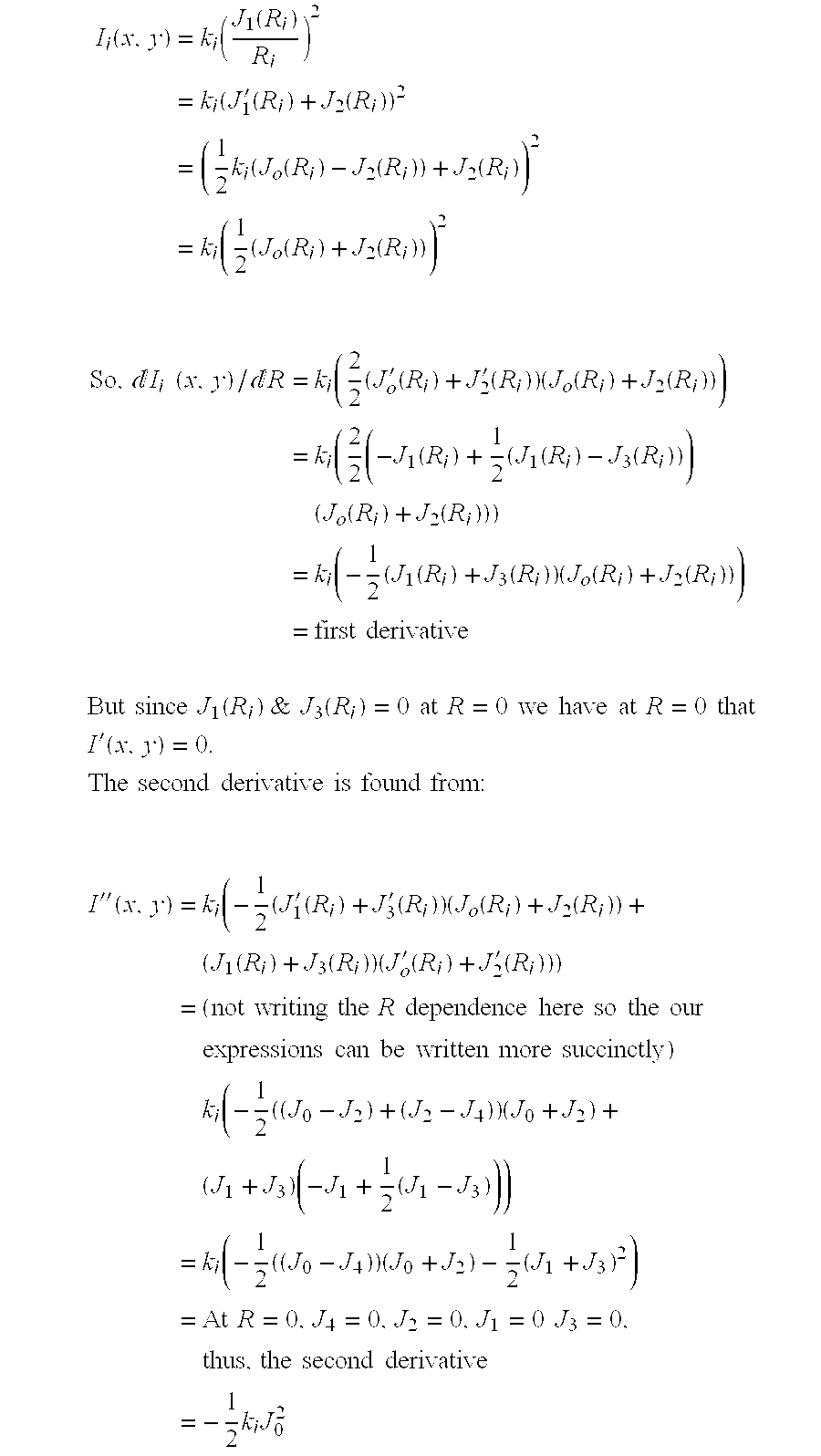Superresolution off axis telescope using the maximum in the laplacian orthogonal to isophote ridge tops
a superresolution, laplacian orthogonal technology, applied in the direction of digital variable/waveform display, instruments, measurement devices, etc., can solve the problems of large number of false images available for de-convolution algorithm, still not good enough,
- Summary
- Abstract
- Description
- Claims
- Application Information
AI Technical Summary
Benefits of technology
Problems solved by technology
Method used
Image
Examples
Embodiment Construction
[0016] The mathematical problem of extracting PSF centers Xi, Yi and amplitudes ki from one single (non-coherent) intensity function (Reference 11—Tychinsky, 1991) for a circular aperture is summarized below. The individual functions ki (J1(Ri) / Ri)2 must be disentangled from their sum, I(x,y)=∑M=1Nki(J1(Ri)Ri)2,withRi=(Xi-x)2+(Yi-y)2+(Zi-z)2
even with some noise. The object then is to solve for Xi, Yi and ki. Specifically we are concerned here with PSF's that are closer than the Rayleigh limit, the problem of super-resolution.
[0017] In that regard we begin by writing down derivatives of an individual PSF in I(x, y) given by, Ii(x,y)=ki(J1(Ri)Ri)2=ki(J1′(Ri)+J2(Ri))2=(12ki(Jo(Ri)-J2(Ri))+J2(Ri))2=ki(12(Jo(Ri)+J2(Ri)))2So,ⅆIi (x,y) / ⅆR=ki(22(Jo′(Ri)+J2′(Ri))(Jo(Ri)+J2(Ri)))=ki(22(-J1(Ri)+12(J1(Ri)-J3(Ri)))(Jo(Ri)+J2(Ri)))=ki(-12(J1(Ri)+J3(Ri))(Jo(Ri)+J2(Ri)))=first derivativeBut since J1(Ri)& J3(Ri)=0 at R=0 we hav...
PUM
 Login to View More
Login to View More Abstract
Description
Claims
Application Information
 Login to View More
Login to View More - R&D
- Intellectual Property
- Life Sciences
- Materials
- Tech Scout
- Unparalleled Data Quality
- Higher Quality Content
- 60% Fewer Hallucinations
Browse by: Latest US Patents, China's latest patents, Technical Efficacy Thesaurus, Application Domain, Technology Topic, Popular Technical Reports.
© 2025 PatSnap. All rights reserved.Legal|Privacy policy|Modern Slavery Act Transparency Statement|Sitemap|About US| Contact US: help@patsnap.com



